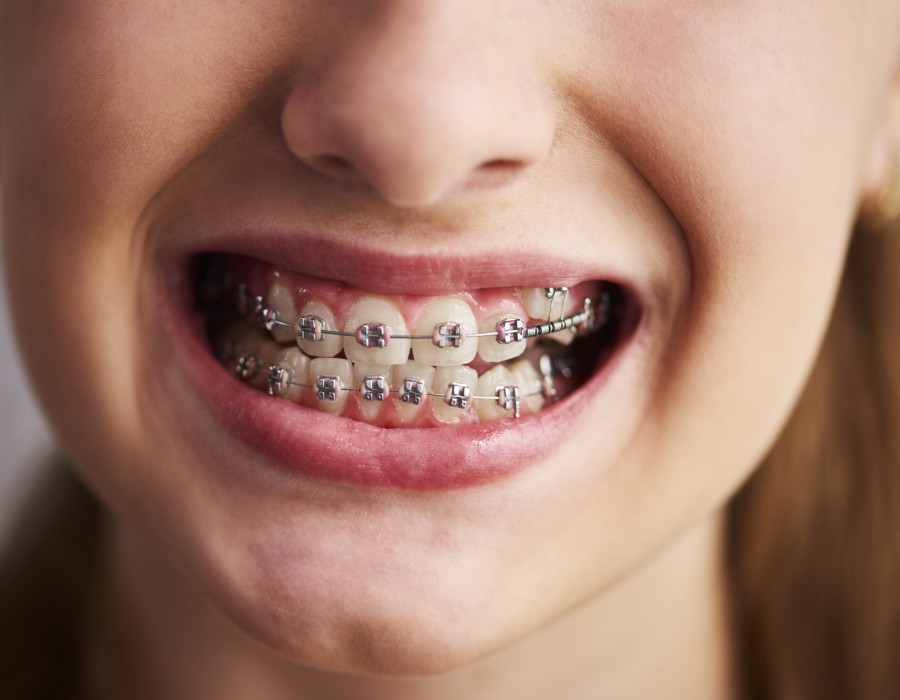Metal braces have been a staple in orthodontics for decades, renowned for their effectiveness in correcting dental issues and aligning teeth. Despite their longstanding use, many people are still curious about how these braces function at a scientific level. This article delves into the mechanics of metal braces, exploring the science behind their transformative power and how they contribute to achieving a perfect smile.
Understanding Metal Braces
Metal Braces in Dubai consist of brackets, wires, and bands. The primary components are the brackets, which are attached to the teeth, and the archwire, which runs through the brackets. Metal bands are also used around the back molars to anchor the braces securely. The combination of these parts works together to apply constant pressure to the teeth, gradually shifting them into the desired position.
The Mechanism of Metal Braces
Brackets and Bands
The brackets, typically made of stainless steel, are glued to the surface of each tooth using a special dental adhesive. These brackets act as anchors, holding the archwire in place. The bands, which encircle the molars, serve a similar purpose, providing a secure foundation for the braces and ensuring they remain effective throughout the treatment.
Archwire
The archwire is a thin, flexible metal wire that connects all the brackets. This wire is the crucial component that applies consistent pressure to the teeth. Initially, the wire is placed into the brackets and secured with small elastic bands or metal ties. As the wire is adjusted during periodic visits to the orthodontist, it exerts gentle pressure on the teeth, encouraging them to move into their correct positions.
How Metal Braces Apply Pressure
Orthodontic Force
The science behind metal braces relies on orthodontic force, which is the pressure applied to the teeth to move them. This force is distributed through the archwire and the brackets. When the wire is adjusted, it changes shape and creates a new pressure on the teeth. Over time, this continuous force causes the bone surrounding the teeth to remodel, allowing the teeth to shift.
Bone Remodeling
Teeth movement involves the process of bone remodeling, which is a fundamental aspect of orthodontic treatment. When pressure is applied to a tooth, it causes the bone on one side of the tooth's root to break down, while the bone on the opposite side is built up. This remodeling process enables the tooth to move through the bone and eventually settle into its new position.
The Role of Adjustments
Regular Adjustments
Metal braces require regular adjustments by an orthodontist to ensure effective treatment. During these appointments, the orthodontist will tighten or replace the archwire and may adjust the brackets or bands. These adjustments are essential for maintaining the correct amount of pressure on the teeth and ensuring that they continue to move according to the treatment plan.
Elastic Bands and Springs
In addition to adjustments, orthodontists may use elastic bands or springs to apply additional forces. These accessories can help correct specific issues, such as bite problems or spacing. Elastic bands, for example, can apply pressure to move teeth into proper alignment or correct bite discrepancies.
The Impact of Metal Braces on Dental Health
Improved Bite and Alignment
One of the primary benefits of metal braces is their ability to improve bite and alignment issues. Proper alignment of the teeth can enhance overall oral health, making it easier to clean teeth and gums effectively. Well-aligned teeth also reduce the risk of uneven wear and tear on the enamel and minimize the chances of developing dental problems in the future.
Long-Term Benefits
The results achieved with metal braces can have lasting effects on dental health and overall well-being. Straightened teeth are easier to maintain, reducing the risk of cavities and gum disease. Additionally, a well-aligned bite can prevent jaw pain and improve overall function.
Advances in Metal Braces Technology
Modern Materials and Design
Recent advancements in metal braces technology have led to the development of more comfortable and aesthetically pleasing options. Modern metal braces are made from lighter and more durable materials, reducing discomfort and improving overall efficiency. Additionally, advancements in bracket design have made braces less noticeable and more effective.
Integration with Digital Technology
Orthodontists now use digital technology to enhance the precision of metal braces treatment. Digital imaging and computer simulations allow for more accurate planning and customization of treatment. This technology helps orthodontists create a more tailored approach, improving the overall outcome and reducing the time required for treatment.
Conclusion
The science behind metal braces involves a combination of mechanical principles and biological processes. By applying consistent pressure through the archwire and brackets, metal braces effectively move teeth into their correct positions. The process of bone remodeling plays a crucial role in enabling this movement, and regular adjustments ensure that the treatment remains on track. Advances in technology continue to improve the comfort and effectiveness of metal braces, making them a reliable choice for achieving a beautiful and healthy smile.





Comments